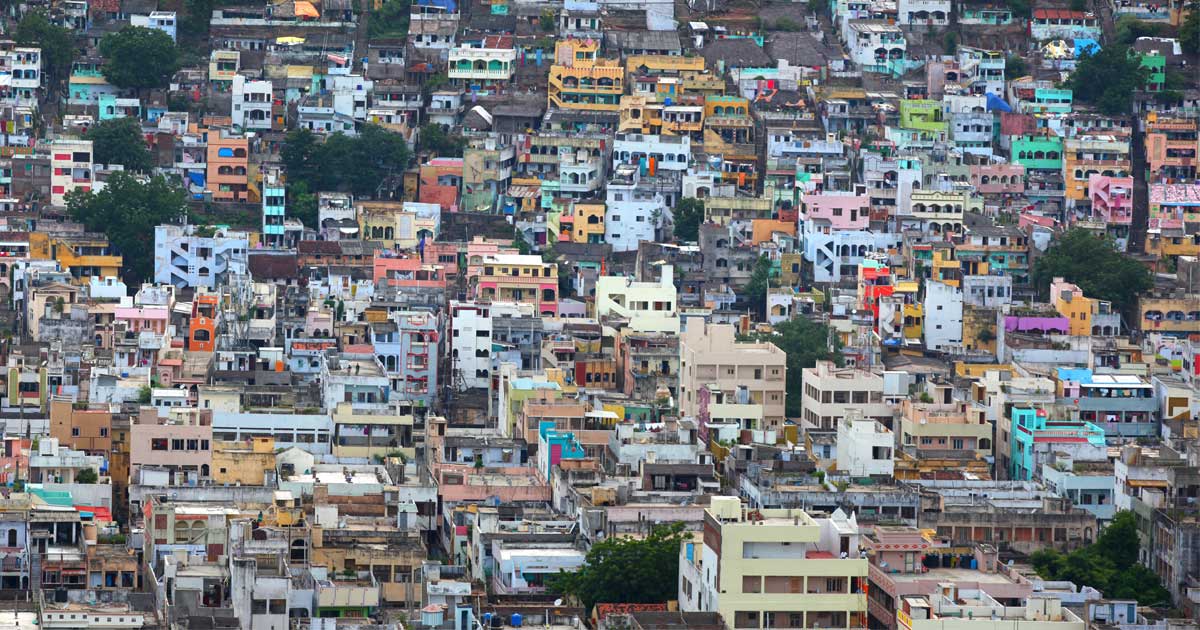As India embarks on a new phase of rapid development in the coming decade en route towards becoming a global superpower, a pertinent question looms on the horizon- Urban Growth or Urbanization- What does the country need most in future years?
Urbanization is a phenomenon that tracks the growing proportion of the population of the country residing in urban zones. This is expressed through a ratio/percentage of the overall population of the country. At the same time, urban growth is the increase in the population and size of any area over a certain time period expressed by way of a number. Hence, urban growth is the actual increase in this number while urbanization is the proportionate increase.
Urban growth basically means how the useful surface is increased by cities which could be the expansion of city limits or density of land that exists via greater densification.
On the other hand, urbanization is the preparation of un-built or rural land with the infrastructure needed for placement of city-based activities within this zone including commercial, housing, services, recreational and industrial activity. Urbanization covers utility infrastructure, IT services, roads, sidewalks, safety and other urban systems. The definition of the State Government is that an urban area is one that is founded on the basis of specific parameters including the population, density of population, revenues generated in local administration, employment percentage in non-agricultural initiatives and economic factors.
The National Government defines urban areas as those with administrative units defined on the basis of the statute. This also includes administrative units that satisfy these criteria-
- Minimum 5,000 people as the population
- 75% of the main working population engaged in pursuits which are non-agricultural
- Population density of a minimum of 400 persons for every square kilometer
Urbanization trends to note here
Indian urbanization accelerated post-independence and as per the World Bank survey, population in urban areas surpassed 30% based on the 2011 census, touching 31.16%. This went up to 34% in the year 2017 and based on the UN State of the World Population report in the year 2007, 40.76% of the population of the country will be residing in urban zones by the year 2030. Mumbai witnessed major migration from rural zones to urban zones, housing 22.1 million individuals in the year 2018 and is the country’s biggest metropolis while Delhi also has 28 million people as of this time. Delhi has the swiftest global urbanization rate with population going up by 4.1% based on the 2011 census.
As per state government reports, India possesses 4,041 statutory towns based on the 2011 census where there are 323 million people residing here. The share of the urban population in the overall population of the country is approximately 27%. The actual share of urban population may go up to 31% if the census urban definition is taken into account. The Ministry of Housing and Urban Affairs’ figures indicate that out of 1210.2 million people in the country as of 1st March, 2011, 377.1 million people live in urban areas. The percentage is 31.6% as far as the urban population is concerned. There are now 53 urban agglomerations or cities in the country as compared to 35 in the year 2001 and more needs to be done on this count.
Why urbanization makes more sense for India now?
Taking all aspects into account, it makes sense to make a compelling case for urbanization ahead of urban growth. The latter is anyway a natural byproduct and may constrain our stretched metro cities which are bursting at the seams for want of proper housing and infrastructure for catering to the growing population and sizes of urban areas. It makes more sense to pace out urban growth to give our cities some breathing space and enable proper filtering of the physical infrastructure to the huge population instead of focusing on hard-core growth pursuits without a sustainable blueprint.
Urbanization, on the other hand, will lead to fresh development for many areas while improving the quality of life for a larger section of people across the country. The benefits are manifold in this case. Urban areas get quicker financing and intervention from the National Government by way of infrastructure growth and absorption of surrounding villages/areas into the urban infrastructure pool.
Planned growth and development is then possible for settlements classified as urban zones and they come under all necessary building bylaws, regulations, developmental guidelines and taxation rules which are pre-requisites for better development. Growth and productivity anyway go hand in hand more with urbanization and this is where India needs to focus its energies. Urbanization boosts housing, infrastructure and quality of life along with local labour and product markets in tandem with lowering logistical expenditure. It will improve education, health and social infrastructure as well.
Urbanization in a planned manner can be undertaken across peripheral zones of major cities along with other semi-rural areas in order to boost the economy, infrastructure development, job creation and real estate in that order. Urban growth, on the other hand, can actually be phased out and paced better in big urban agglomerations struggling to accommodate the growing number of people with limited infrastructure.




